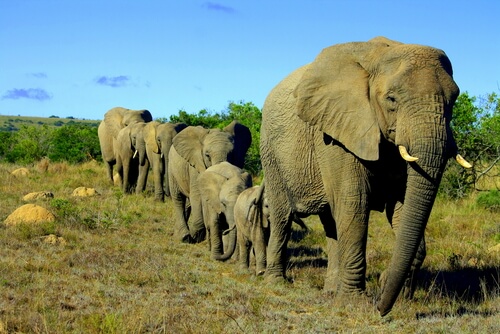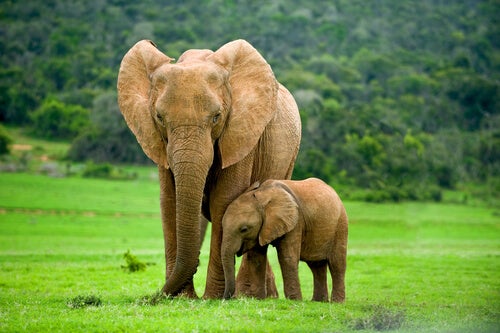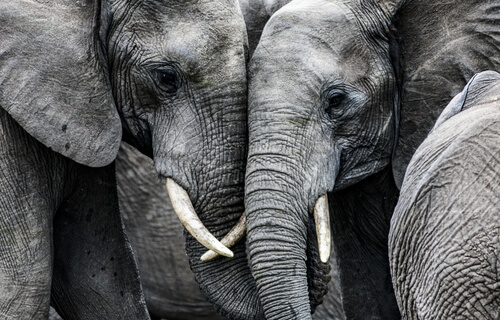Pets
Elephants are social animals
Elephants are social animals, and that means they are highly interactive organisms with other members of their species. This is possible because they are tremendously intelligent beings and capable of creating a recognizable society in the pack.
The intelligence of the elephants
In animal psychology, intelligence is the ability to solve problems. This is appreciated in nature by the presence of animals in very varied environments, which shows that survival and reproduction problems have been resolved.
The human concept of intelligence makes us look more at the ability to solve complex problems and not simple evolutionary challenges. We do not realize that, in the animal kingdom, intelligence is the ability to adapt to changes.
Why are elephants intelligent beings considered?
We know that they are long-lived animals, that travel a lot during their life and that they have a very developed central nervous system shortly after birth. And these are all characteristics that are usually associated with the ability to solve problems. Other factors to consider are:
- His ability to handle tools, both in nature and in captivity. It is associated with greater cognitive aptitude and the ability to overcome challenges. For example, they use the trunk to peel the bark of trees or choose the best leaves.
- The awareness of themselves. Experiments have been carried out where an elephant was placed in front of a mirror and he used it to find hidden food.
- And finally the memory. Elephants have always been recognized as animals with good memory. They learn quickly and store knowledge to use it in the future.
All these data have to be taken into account when approaching an elephant. As intelligent beings, they are able to solve any situation considered as potentially dangerous.
Family structure and learning
Elephants have a family structure formed by a group of females with a matriarch in front, usually the oldest elephant. The groups formed are not excessively numerous.
For example, both the African savanna elephant (Loxodonta africana) as the Asian elephant (Elephas maximus) form groups of 8-12 individuals. And the African jungle elephant (Loxodonta cyclotis) forms even less numerous groups, usually with only one female and her offspring.
Within the family nucleus, young unpaired females are considered midwives. In this way, they help the young to learn, while benefiting from this relationship. But if there is someone who influences this learning, that is the matriarch. Being the oldest female, the rest of females imitate their behaviors and teach them to the young.
In the groups formed by females, age, size, kinship … affect the status of each one of them. And, because they tend to remain in the same group from birth to death, they form very strong bonds.
Normally, the matriarch is the group’s main source of memory, which helps survival.
On the other hand, pups born to dominant females usually survive better than the rest. And this seems to be because the females themselves have preference when choosing food, which improves the quality of their milk.
And what about the males?
Males move away from the home group when they are teenagers. Normally, they are seen forming groups of young males with continuous fights in search of improving their social status.
When males reach 18-20 years of life, they are physically larger than females and become ideal candidates for intercourse.
Here comes a period typical of male elephants, the ‘must‘. This period is characterized by highly aggressive behavior, accompanied by an increase in reproductive hormones. And usually occurs in winter.
Those males in the ‘must’ phase are reproductively dominant and are more likely to mate with females. And, if there is no ‘must’, the other characters that give dominance are size and age.
The elephant has always been one of the animals that we like the most for its tenderness. Among the curiosities of the elephant … highlights his pregnancy of 22 months!



